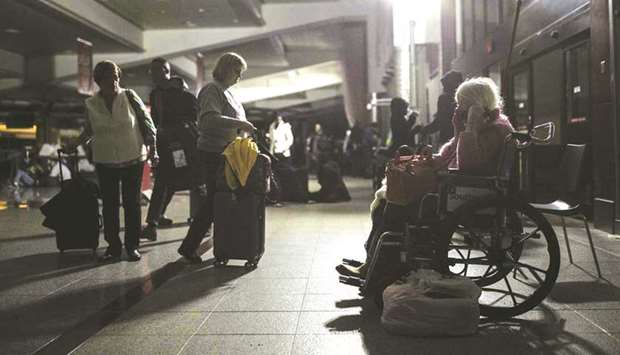More than 1bn people live with disabilities around the world, representing 15% of the global population.
This number is increasing due to population ageing and the rapid spread of chronic diseases, as well as due to refinements in the methodologies used to measure disability, says the World Health Organisation (WHO).
While this signifies a huge potential market for travel and tourism, it still remains vastly under-served due to inaccessible facilities and services, as well as discriminatory policies and practices, according to the United Nations.
For persons with disabilities and reduced mobility, travelling by air can be a challenge, as finding information on accessible services, checking luggage on a plane, booking a room to fulfil access needs, often prove to be difficult, costly and time consuming.
Such persons face challenges in enjoying the same facilities and pleasures associated with travel not only because of their disability, but also due to the failure of many governments to address the problem of making all forms of transportation and accommodation accessible within their own country.
And even when a country adopts laws that mandate that transportation be accessible to all, there is no universality on these rules and regulations.
The UN Convention on the Rights of Persons with Disabilities (CRPD) is the first human rights treaty that sets out the legal obligations on member countries to promote and protect the rights of persons with disabilities.
Providing better access and improving travel experience of passengers with disabilities is gaining greater regulatory importance globally, according to the International Air Transport Association.
IATA Resolution 700 related to assisting passengers with disabilities first came into effect in 1952, making the global trade body of airlines one of the first industries addressing the needs of such persons.
Analysts say there are many reasons why airlines around the world are striving to provide better service to passengers with disabilities and special needs.
First and foremost, making air travel accessible to every person is the right thing to do.
A study conducted by the American Institute of Research, which looked into the spending power of adults with disabilities — has shown that the travel and tourism industry is losing out on a significant chunk of business by not making air travel accessible, IATA said in a recent report.
Accessible travel and tourism, therefore, is vitally important to ensure that all people can participate in and enjoy tourism experiences.
More people certainly have access needs, whether or not related to a physical condition. For example, older and less mobile people have access needs, which can become a huge obstacle when travelling or touring.
Thus, accessible tourism is the ongoing endeavour to ensure tourist destinations, products and services are accessible to all people, regardless of their physical limitations, disabilities or age. This includes publicly and privately owned tourist locations, facilities and services.
Accessible travel and tourism involve a collaborative process among all stakeholders, governments, international agencies, tour-operators and end-users, including persons with disabilities and their organisations.
From idea to implementation, a single destination visit normally involves many factors, including accessing information, long-distance travel of various sorts, local transportation, and accommodation, shopping, and dining. The impact of accessible tourism thus goes beyond the tourist beneficiaries to the wider society, engraining accessibility into the social and economic values of society.
Accessibility is also an important aspect of realising the rights of the world’s ageing population, UN has noted in a recent report. As one grows older, one’s chance of experiencing a permanent or temporary disability gets increased.
A focus on accessibility can therefore ensure that we are able to participate fully in our societies well into our older years. Accessibility also benefits pregnant women and persons who are temporarily rendered immobile.
For families with small children, accessible infrastructure — particularly in transportation, city planning and building design — improves their ability to participate in social and cultural activities.
Hence it is important that all countries consider enacting a common ‘Bill of Rights’ for disabled travellers with the same sets of rules and regulations for accessibility with regard to transportation and accommodation.
Persons with disabilities and reduced mobility are important to the air transport sector. They have the right to safe and dignified travel anywhere in the world.
Only a partnership between the industry and governments around the world can meet the needs of such physically challenged people.
* Pratap John is Business Editor at Gulf Times.

An old woman waiting at Hartfield-Jackson Atlanta International Airport.

